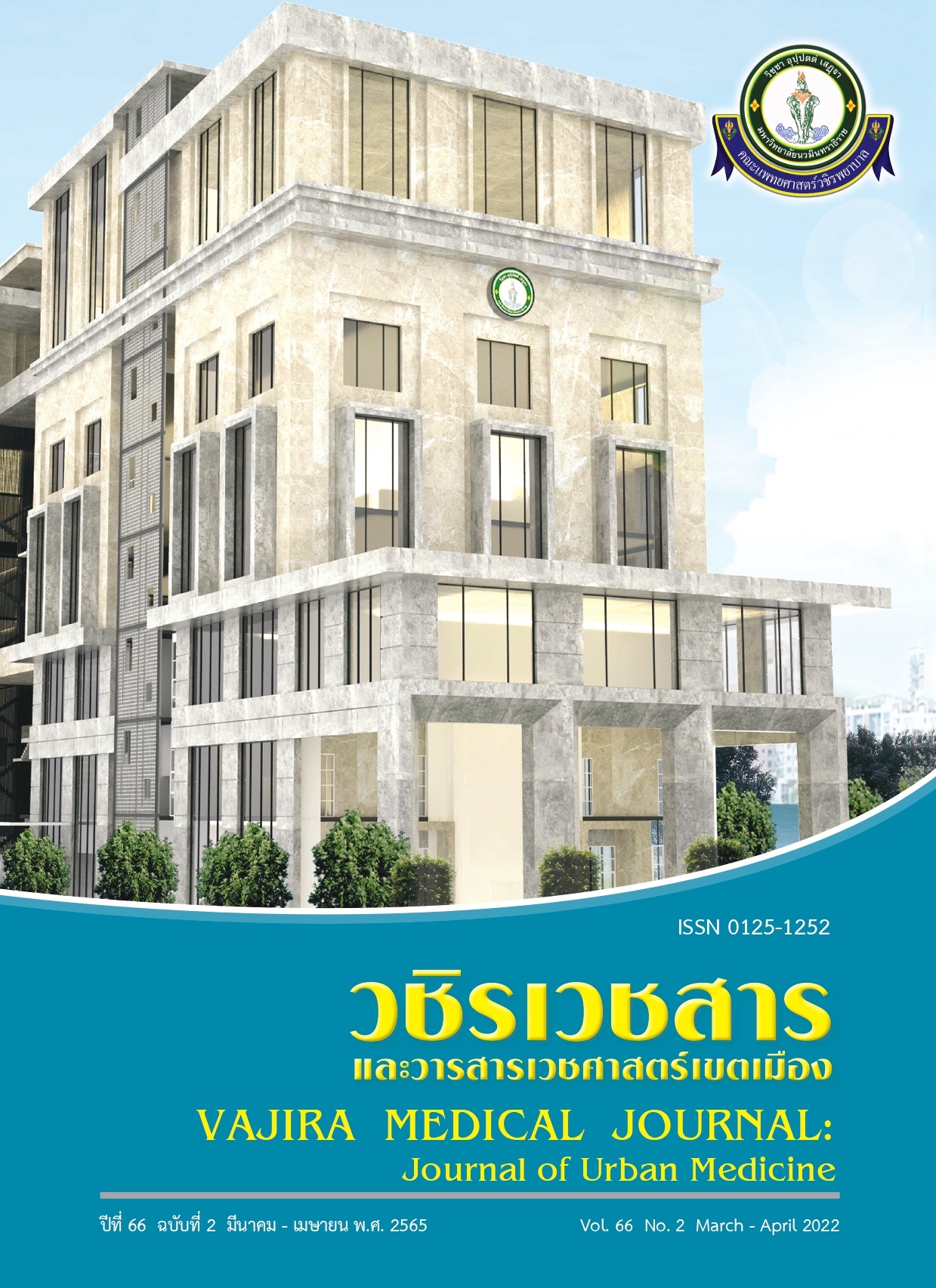Diagnostic Accuracy of the Liver Imaging Reporting and Data System (LI-RADS 2018) in Diagnostic of Hepatocellular Carcinoma in Cirrhosis Patients, Chronic Hepatitis B Carrier Patient, Prior Hepatocellular Carcinoma Patient and Treated Hepatocellular Carcinoma Patient Compared with Histopathological Report
Main Article Content
Abstract
Objective: To evaluate the accuracy of the Liver Imaging Reporting and Data System (LI-RADS) version 2018 category 5 in magnetic resonance imaging (MRI) for the diagnosis of hepatocellular carcinoma
Methods: This retrospective study included patients who underwent liver MRI and had proven pathological lesion. From 2012 to 2021, 45 patients (52 observations including 29 HCCs) met the inclusion criteria. Two radiologists independently reviewed hepatic observation and assessed the LI-RADS version 2018 category. The diagnosis performances of LI-RADS 3, LI-RADS 4, and LI-RADS 5 were calculated using the generalized estimating equation method.
Results: A total of 45 patients (mean age, 59.8) with 52 lesions, including 26 men and 19 women met the inclusion criteria. Most lesions were HCC ,29 (55.8%). The highest sensitivity of the major feature for HCC diagnosis was non-rim arterial enhancement (93%). The highest specificity of the major feature for HCC diagnosis was capsule appearance (100%). The highest accuracy of the major feature for diagnosis was non-rim peripheral washout (86.6%). The inter-observer agreement between the two readers in the classification of lesions was perfect for the Liver Imaging Reporting and Data System (LI RADS) classification (k= 0.868) and almost perfect for LI-RADS with AF classification (k= 0.872). The LI-RADS 5 sensitivities were 82.8% and 79.3% (as R1, R2) with the same value when combined with ancillary findings. The accuracy of L5 of LI-RADS 2018 was 87.5% (same value with ancillary findings) and 83.3% (same value with ancillary findings) in R1 and R2, respectively.
Conclusion: The LI-RADS version 2018 category 5 has high sensitivity, specificity, and accuracy in the diagnosis of HCC.
Downloads
Article Details

This work is licensed under a Creative Commons Attribution-NonCommercial-NoDerivatives 4.0 International License.
References
American cancer society. Cancer Facts & Figures 2020 [Internet]. 2021 [cited 2021 Oct 2]. Available from: Cancerstatisticscenter.cancer.org
Mittal S. Serag El. Epidemiology of hepatocellular carcinoma. J Clin Gastroenterol 2013;47:S2-6.
Bosch FX, Ribes J, Cléries R, Díaz M. Epidemiology of hepatocellular carcinoma. Clinics in liver disease 2005;9(2):191-211.
Imsamran W, Pattatang A, Supaattagorn P, Chiawiriyabunya I, Namthaison K, Wongsena M, et.al. Cancer in Thailand Volume IX 2013-2015. Bangkok : Cancer Registry Unit, National Cancer Institute, 2015.
Chernyak V, Fowler KJ, Kamaya A, Kielar AZ, Elsayes KM, Bashir MR, et al. Liver Imaging Reporting and Data System (LI-RADS) version 2018: imaging of hepatocellular carcinoma in at-risk patients. Radiology 2018;289(3):816-30.
Shuo S, Liang Y, Kuang S, Chen J, Shan Q, Yang H, et al. Diagnostic performance of LI-RADS version 2018 in differentiating hepatocellular carcinoma from other hepatic malignancies in patients with hepatitis B virus infection. Bosnian journal of basic medical sciences 2020;20(3): 401-10.
Lee S, Kim YY, Shin J, Hwang SH, Roh YH, Chung YE, et al. CT and MRI liver imaging reporting and data system version 2018 for hepatocellular carcinoma: A systematic review with meta-analysis. Journal of the American College of Radiology 2020;17(10):1199-206.
Lee MH, Kim SH, Park MJ, Park CK, Rhim H. Gadoxetic acid-enhanced hepatobiliary phase MRI and high-b-value diffusionweighted imaging to distinguish welldifferentiated hepatocellular carcinomas from benign nodules in patients with chronic liver disease. AJR Am J Roentgenol 2011;197(5):W868–75.
Granata V, Fusco R, Avallone A, Filice F, Tatangelo F, Piccirillo M, et al. Critical analysis of the major and ancillary imaging features of LI-RADS on 127 proven HCCs evaluated with functional and morphological MRI: Lights and shadows. Oncotarget 2017;8(31):51224-37.
Cerny M, Bergeron C, Billiard JS, MurphyLavallée J, Olivié D, Bérubé J, et al. LI-RADS for MR Imaging Diagnosis of Hepatocellular Carcinoma: Performance of Major and Ancillary Features. Radiology 2018;288:118-28.
Joo I, Lee JM, Lee DH, Ahn SJ, Lee ES, Han JK. Liver imaging reporting and data system v2014 categorization of hepatocellular carcinoma on gadoxetic acid‐enhanced MRI: Comparison with multiphasic multidetector computed tomography. Journal of Magnetic Resonance Imaging 2017;45(3):731-40.
Choi SH, Byun JH, Kim SY, Lee SJ, Won HJ, Shin YM, et al. Liver Imaging Reporting and Data System v2014 with gadoxetate disodium– enhanced magnetic resonance imaging: validation of LI-RADS category 4 and 5 criteria. Investigative radiology 2016;51(8):483-90.


